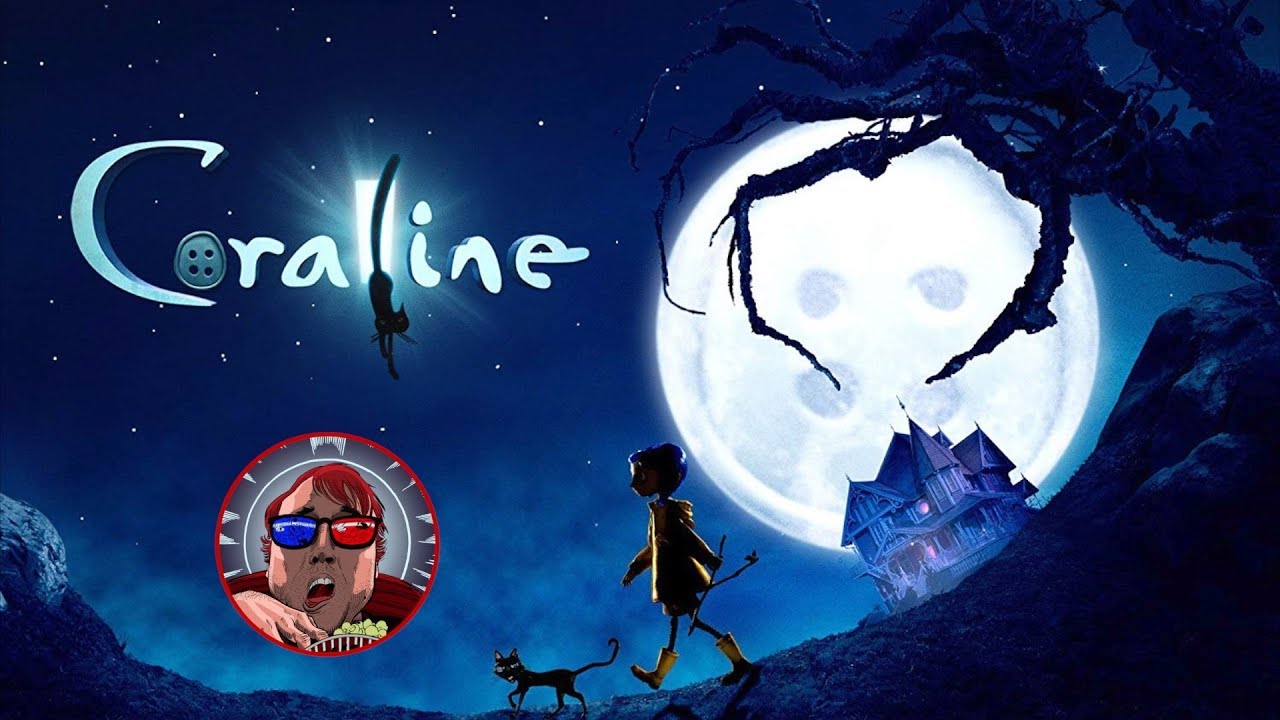Coraline (2009) – A Dark Fantasy Adventure into the Other World

Coraline (2009) – A Dark Fantasy Adventure into the Other World
Introduction
Released in 2009, Coraline is an animated dark fantasy film directed by Henry Selick, based on Neil Gaiman’s novel of the same name. The film masterfully blends stop-motion animation with an eerie atmosphere, creating a visually stunning yet unsettling experience. With its compelling storytelling, richly detailed world-building, and deep themes, Coraline continues to captivate audiences of all ages.
Plot Summary
Coraline follows the story of Coraline Jones, an adventurous 11-year-old girl who moves into the Pink Palace Apartments with her neglectful parents. Feeling bored and ignored, she discovers a hidden door in her new home that leads to a parallel world—an alternate reality where everything seems better. In this ‘Other World,’ she meets her Other Mother and Other Father, who are affectionate, attentive, and seemingly perfect.
However, Coraline soon realizes that this dream-like world hides a sinister secret. The Other Mother, who has button eyes and an eerie smile, wants to keep Coraline forever, but at a terrifying cost. As Coraline uncovers the dark truth behind the Other World, she must use her wit and courage to escape and rescue her real parents.
Animation and Visuals
One of Coraline’s strongest aspects is its breathtaking stop-motion animation. Laika Studios painstakingly crafted each frame with exquisite attention to detail, giving the film a unique, handcrafted aesthetic. The use of lighting and colors plays a crucial role in differentiating the real world from the Other World. While Coraline’s reality is muted and dull, the Other World is vibrant and enchanting—at least at first. As the film progresses, the Other World transforms into a nightmarish landscape, reinforcing its underlying horror elements.
The character design is equally striking, with exaggerated proportions and stylized movements adding to the film’s surreal quality. The Other Mother’s transformation into her true form—a skeletal, spidery creature—remains one of the most terrifying moments in stop-motion history.

Themes and Symbolism
Beyond its captivating visuals, Coraline explores profound themes that resonate with both children and adults:
- Appreciation and Gratitude: At the start, Coraline is frustrated with her parents’ lack of attention, but by the end, she realizes their love and sacrifices are genuine, even if they’re not overly affectionate.
- The Dangers of Temptation: The Other World represents the illusion of perfection. Coraline’s initial attraction to it mirrors the way people can be lured by superficial charm without seeing the hidden dangers beneath.
- Courage and Independence: Coraline’s journey is a coming-of-age tale. She starts as a headstrong but naive girl and evolves into a brave, resourceful heroine who takes charge of her own destiny.
Voice Cast and Performances
- Dakota Fanning as Coraline Jones: Fanning delivers a strong performance, capturing both Coraline’s stubbornness and vulnerability.
- Teri Hatcher as Mel Jones / The Other Mother: Hatcher’s dual role as Coraline’s real mother and her sinister counterpart is chilling. Her voice subtly shifts between warmth and malevolence, making the Other Mother all the more disturbing.
- Keith David as The Cat: The enigmatic talking cat serves as Coraline’s guide, and David’s deep, smooth voice adds an air of mystery and wisdom.
- John Hodgman as Charlie Jones / The Other Father: Hodgman plays both Coraline’s bumbling but caring real father and the eerily cheerful Other Father, adding depth to both roles.

Horror Elements and Psychological Depth
Though marketed as a children’s film, Coraline leans heavily into psychological horror. The Other Mother, also known as the Beldam, embodies classic horror archetypes—a seemingly loving figure who becomes a monstrous captor. The concept of button eyes is particularly unsettling, symbolizing a loss of individuality and free will.
The film also plays with suspense and fear in subtle ways. The eerie soundtrack, composed by Bruno Coulais, features haunting melodies that enhance the dreamlike yet nightmarish atmosphere. The distorted versions of familiar characters and settings make Coraline’s journey feel like a descent into a twisted fairy tale.
Impact and Legacy
Since its release, Coraline has gained a cult following and is widely regarded as one of the best stop-motion films ever made. It set a new standard for animated horror and showcased Laika Studios’ expertise in pushing the boundaries of the medium. The film’s deeper themes and unsettling atmosphere make it a rare example of a children’s movie that doesn’t shy away from darkness.
Final Verdict
Coraline (2009) is a masterpiece of dark fantasy and stop-motion animation. With its visually stunning world, compelling protagonist, and chilling antagonist, the film offers an unforgettable cinematic experience. Whether you’re a fan of animation, horror, or psychological storytelling, Coraline remains a must-watch film that continues to enchant and unsettle audiences.











